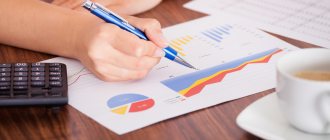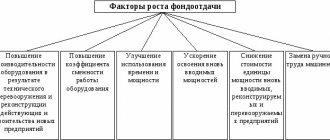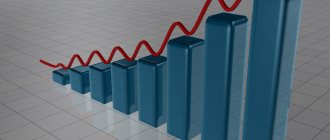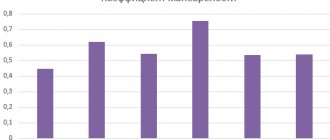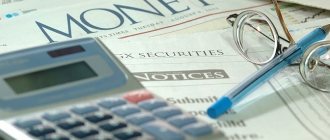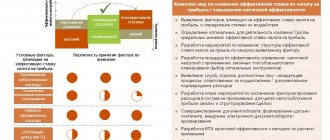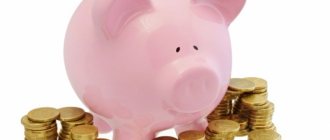Asset classification
The company's assets include the cost expression of the resources that support the production process of the enterprise. Assets include:
- Non-current assets (structures, buildings, machinery and equipment, transport, etc.),
- Working capital (cash, accounts receivable, short-term investment, etc.).
Asset accounting is mandatory for most Russian enterprises. All assets are concentrated on the left side of the balance sheet and are divided according to their purpose:
- The first section of the balance sheet is represented by non-current assets (fixed assets and intangible assets), which are accounted for in accordance with their residual value less depreciation (line 1100 of the balance sheet);
- The second section of the balance sheet is represented by working capital, which is directly involved in the production process (line 1200 of the balance sheet).
How to calculate the book value of assets
The total balance sheet assets is an indicator that reflects the total book value of all types of assets of the organization. The procedure for determining the book value of assets is disclosed in the relevant regulatory documents governing accounting. At the same time, it is important to take into account the main requirement for reflecting assets on the balance sheet: they are reflected in a net valuation, that is, minus regulatory values (clause 35 of PBU 4/99).
Thus, fixed assets are reflected in the balance sheet at their residual value. The residual value of fixed assets is their original (replacement) cost reduced by accrued depreciation. In accordance with the Chart of Accounts (Order of the Ministry of Finance dated October 31, 2000 No. 94n), the residual value of fixed assets (COST) as of any reporting date is determined as follows:
SOST = D01 – K02,
where D01 is the debit balance of account 01 “Fixed assets”;
K02 - credit balance of account 02 “Depreciation of fixed assets”.
Similarly, intangible assets are reflected in the balance sheet at their residual value.
The balance sheet amount of accounts receivable is shown minus the created reserves for doubtful debts, and inventories - minus the reserve for reduction in the value of material assets.
Formula for the average annual value of assets on the balance sheet
To calculate the average amount of assets of an enterprise for a year, it is necessary to add up the amount of assets at the beginning and end of the year. This amount is then divided by 2 or multiplied by 0.5.
The formula for the average annual value of assets on the balance sheet uses financial reporting data.
In general, the formula for the average annual value of assets on the balance sheet is as follows:
SA avg = (SAnp + SAkp) / 2
Here CA av is the average annual value of assets,
SAnp – asset value at the beginning of the period,
SACP is the value of assets at the end of the period (year).
The formula for the average annual value of assets on the balance sheet allows you to make calculations both for the assets of the enterprise as a whole, and separately for current and non-current assets.
Online magazine for accountants
At the end of winter and beginning of spring, all organizations are actively preparing financial statements for 2020. Let's talk about one of the key indicators of any enterprise - the book value of assets. Where to look at it in the balance sheet for 2020 and how it will help.
More to read: Municipal Assistance to Parents in Starting a Business
Any specialist who has ever dealt with accounting knows the words “balance sheet” and “organizational assets.” If we explain their meaning in accessible language, it turns out that the book value of assets is a certain number of funds and benefits that can be expressed in monetary terms.
Calculation features
The total assets of the enterprise are recorded on line 1600 of the balance sheet, which is compiled by accountants at the end of each year. When applying this formula, they use balance sheet indicators for several years, while the indicator on line 1600 is taken from the balance sheet for each year, summed up and subsequently divided by 2.
In the case of calculations for current assets, the formula for the average annual value of assets on the balance sheet will require information from line 1200 of the balance sheet. If calculations for non-current assets are required, then the accountant uses the indicators on line 1100 of the balance sheet.
How to determine the amount of working capital
The actual amount of working capital has a significant impact on the sustainability indicators of economic activity.
The amount of own working capital is determined as part of the company’s financial assets, the financing of which is carried out from its own sources. In this case, the amount of own working capital (formula) is calculated as follows:
Total assets = Current assets - Short-term liabilities
Considering the fact that these indicators are presented in the first form of the accounting package, we can present the formula discussed above using balance sheet data. Thus, the amount of working capital will be determined by the formula on the balance sheet:
Total assets = Line 1200 – Line 1500.
It is important to note that the amount of working capital and the volume of working capital available to companies are similar concepts, but not identical. In this regard, the procedure for calculating these indicators will also differ. The calculation is based on the values of equity capital, the volume of non-current assets of the company, as well as its long-term financial liabilities.
Accordingly, the amount of own working capital - the formula - will be presented in the following form:
Total equity capital = (Equity capital + Long-term liabilities) – Non-current assets
In a similar way, you can depict the formula discussed above using the lines of the balance sheet. Thus, based on the balance sheet information, the amount of working capital is equal to:
Total equity capital = (Line 1300 + Line 1530) – Line 1100
By performing a simple calculation, you can get both positive and negative values for the working capital indicator. A negative value of own working capital means, first of all, that the current state of affairs of the company leaves much to be desired. However, there are exceptions to this practice. These include companies that are characterized by a rapid cycle of converting inventory into revenue. This situation most often occurs among fast food restaurants. A negative value of own working capital is not the only criterion that suggests that the dynamics of the financial condition are negative. After the calculation has been made, it is necessary to compare the resulting value of own working capital (negative, positive) with the inventories that the company has today. If an organization operates stably, then working capital should not only be above zero, but also exceed the value of the company’s material reserves.
Thus, taking into account the current regulations adopted in relation to organizations, own working capital must:
- Take positive values;
- Exceed the calculated amount of the company’s short-term liabilities;
- Exceed the size of the company's material reserves.
In some situations, a company may need to determine the average amount of working capital. This indicator is used to calculate the profitability of business activities. Calculation of efficiency (profitability) will be carried out by dividing the profit received during the period by the average volume of the organization's own working capital.
Despite the fact that the methodology for calculating the amount of own working capital and own working capital is not associated with significant difficulties, it is important to use the correct formula for calculation, the ability to interpret the results obtained and draw a parallel between the calculated value of the indicator and the current state of affairs in the organization.
Similar articles
- Share of working capital in assets formula
- Increase in working capital: calculation
- Working capital in the balance sheet, line
- Release of working capital
- Classification of working capital of an enterprise
The value of the average annual value of assets on the balance sheet
The average annual value of assets, which is calculated by analysts, is subsequently used when calculating coefficients that can characterize the state and efficiency of any enterprise:
- Return on assets
- Asset turnover ratio, etc.
The indicator is also used to find the reasons that led to changes in the operation of the enterprise and make decisions in the field of resource management.
The average annual value of assets indicator can give a more accurate understanding of the size and value of assets, while it neutralizes circumstances that can distort the real amount of assets.
If the asset turnover indicators of different enterprises for different years are compared, then it is necessary to check the uniformity of the assessment of the average annual amount of assets.
Average assets: balance sheet formula
Yurkova, S.V. Yurkov Enterprise Economics
Electronic textbook
Typical example 3. WORKING CAPITAL
Problem 1
Determine and analyze the structure of working capital of enterprises using the following data:
| Elements of working capital | Amount, million rubles | |
| Enterprise 1 | Enterprise 2 | |
| Productive reserves | 94,70 | 94,92 |
| Unfinished production | 16,15 | 27,64 |
| Future expenses | 134,15 | 5,32 |
| Finished products | 17,65 | 30,02 |
| Others | 87,35 | 62,1 |
Solution
The structure of working capital represents the share of each element in the total amount. Let us determine the structure of working capital of both enterprises:
| Elements working capital | Enterprise 1 | Enterprise 2 | ||
| Sum, million rubles | Structure, % | Amount, million rubles | Structure, % | |
| Productive reserves | 94,70 | 27,0 | 94,92 | 43,1 |
| Unfinished production | 16,15 | 4,7 | 27,64 | 12,6 |
| Future expenses | 134,15 | 38,3 | 5,32 | 2,4 |
| Finished products | 17,65 | 5,0 | 30,02 | 13,7 |
| Others | 87,35 | 25,0 | 62,1 | 28,2 |
| Total | 350 | 100 | 220 | 100 |
The calculated structures make it possible to conclude that the second enterprise is more material-intensive than the first. At the same time, the first enterprise has to invest heavily in future expenses. Most likely, these are the costs of preparation and development of production, which are determined by the specifics of the production process. A higher proportion of work in progress may indicate a longer production cycle or a higher cost of processed raw materials or materials. In combination with the large share of finished products, this allows us to make the assumption that the second enterprise is most likely one of those that produces products with a higher share of added value.
Problem 2
Calculate the average quarterly and average annual balances of working capital, as well as the turnover of working capital (duration of turnover) and the turnover ratio for the year, using the following data:
| Working capital balances | Volume of products sold | ||
| date | Amount, thousand rubles | quarter | Amount, thousand rubles |
| as of January 1, 2002 | 2 500 | I | 3 000 |
| April 1, 2002 | 2 600 | II | 3 500 |
| July 1, 2002 | 2 400 | III | 2 900 |
| October 1, 2002 | 2 400 | IV | 3 100 |
| January 1, 2003 | 2 500 | ||
Solution
The turnover ratio is determined by the formula
Cob
=
R
/
ObS
.
To calculate the duration of turnover in days, use the formula
BEFORE
=
D · ObS
/
R
.
Therefore, first you need to calculate the average working capital balances for the year and the sales volume for the year:
OS
= / 4 = 2,475 thousand rubles,
R
= 3,000 + 3,500 + 2,900 + 3,100 = 12,500 thousand rubles,
Cob
= 12,500 / 2,475 = 5 rev/year,
BEFORE
= 360 · 2,475 / 12,500 = 71 days.
Thus, working capital made 5 revolutions per year, while the duration of one revolution averaged 71 days.
Problem 3
The average balance of working capital in 2002 was 15,885 thousand rubles, and the volume of products sold for the same year was 68,956 thousand rubles. In 2003, the duration of the turnover is planned to be reduced by 2 days.
Find the amount of working capital that the company needs, provided that the volume of products sold remains the same.
Solution
First, let's calculate the duration of turnover for 2002:
BEFORE
= 360 · 15,885 / 68,956 = 82 days.
Then we determine the duration of turnover for 2003:
BEFORE
= 82 – 2 = 80 days.
Taking into account the new duration, we will calculate the need for working capital:
80 days = 360 · ObS
/ 68 956,
OS
= 15,323 thousand rubles.
| Home » Accountant » Current assets on the balance sheet |
Asset turnover: calculation formula
The value of the resource efficiency indicator directly depends on sales volume. If there is a downward trend in the value of the ratio, this means that financial activity is declining. And, conversely, its increase indicates that sales volumes have increased and capital is turning over faster.
The quality of work with debtors is analyzed based on the receivables turnover ratio. It characterizes how quickly debtors pay for products provided on credit. The higher the indicator, the more effective the pricing policy is considered.
27 Jun 2020 stopurist 413
Share this post
- Related Posts
- Sample Notice of Disconnection of Cold Water for Debts
- What week do you start on maternity leave according to the labor code?
- Are disabled people of group 2 exempt from paying transport tax?
- Is there a Monthly Payment to the Son of the Liquidator of Chaes After 18 Years?
Current assets on balance sheet
Go back to Balance Sheet
A balance sheet asset is considered “current” if it is expected to change its form within a year from the balance sheet date. Such assets are inventories, accounts receivable and cash. The balance sheet may also show current assets—short-term investments. The one-year period is a rough guideline for establishing a more fundamental distinction between those assets that will be used in business operations (fixed capital) and those assets that are part of working or trading capital. This means that just as investments can be long-term or short-term, cars can be fixed assets (if it is part of a company's car fleet) or current assets (if it is part of a car dealer's trading inventory). Strictly speaking, no one can expect a current asset to turn into cash within a year, but it should be in circulation as stated above. For example, inventories may be sold to customers on credit, which will slow down cash flow. Linking current assets to sales increases the value of their market value (usually their net realizable value). Thus, although the market price of fixed assets is usually neglected in historical cost accounting, it is not ignored for current assets.
Formula for the average annual value of assets on the balance sheet
First, the notes to the balance sheet can show the market value of some current assets. Secondly, the assessment of balance sheet indicators is carried out using the rule of the lower of two values: cost and market value. During periods of rising prices, this usually results in the use of the original cost. However, the ever-implicit possibility of a lower market value is an example of accounting's inherent principle of conservatism. In British balance sheets, current assets are shown after fixed capital, and also in order of increasing liquidity (the last heading is “Cash”). American balance sheets usually begin with current assets. The expression net current assets (or "working capital") means current assets minus current liabilities. The ratio of current assets to current liabilities is called the liquidity ratio.
Current assets are enterprise resources that are not intended for long-term use. These include inventories and expenses, short-term accounts receivable and other liquid assets that can be converted into cash within a production cycle or year. You can find current assets using the company's financial statements.
1. Open the company’s balance sheet as of the date you need. The value of current assets at the beginning and end of the period is indicated on line 290 (total of section II of the balance sheet). Determine their dynamics over the period by calculating the difference between these figures.
2. Calculate the average value of current assets for the period using the formula: Ats = (At1+At2)/2, where:
At1 - current assets of the enterprise at the beginning of the period; At2 - current assets of the enterprise at the end of the period. You can then analyze the effectiveness of their use.
3. Calculate the profitability of the enterprise’s assets using the formula: Pa = P / Ats x 100%, where:
— P — net profit for the analyzed period; — ATS is the average value of the enterprise’s current assets for the period.
Determine the amount of net profit of the enterprise on line 190 of the “Profit and Loss Statement”.
4. Divide the amount of the enterprise's net profit by the calculated average value of the enterprise's assets.
By multiplying the resulting coefficient by 100%, you obtain the return on assets of the enterprise for the analyzed period. This indicator characterizes the amount of profit per each ruble of their value. It is considered optimal if it is 18-20%.
5. Find the turnover of current assets using the formula:
Ob = (V/Ats) * Kdn, where:
B - sales revenue for the reporting period (excluding VAT); ATS - the average value of the current assets of the enterprise; Kdn - number of days of the reporting period.
Take revenue from the income statement for the analyzed period. Dividing it by the average value of current assets, multiply the resulting figure by the number of days in the reporting period.
6. Calculate the turnover of current assets for previous reporting periods, analyze the dynamics of changes. The lower the score, the better. The economic efficiency of reducing the asset turnover period is expressed in the release of additional funds from circulation and, as a result, in increasing the profit of the enterprise.
7. Keep in mind that as the turnover period decreases, less inventory is required. At the same time, storage costs are reduced. Accordingly, a slowdown in turnover leads to an increase in the cost of current assets and additional costs. Thus, timely calculation and analysis of the state of assets will allow making the right decisions to manage their use.
| Home » Accountant » Average asset value |

